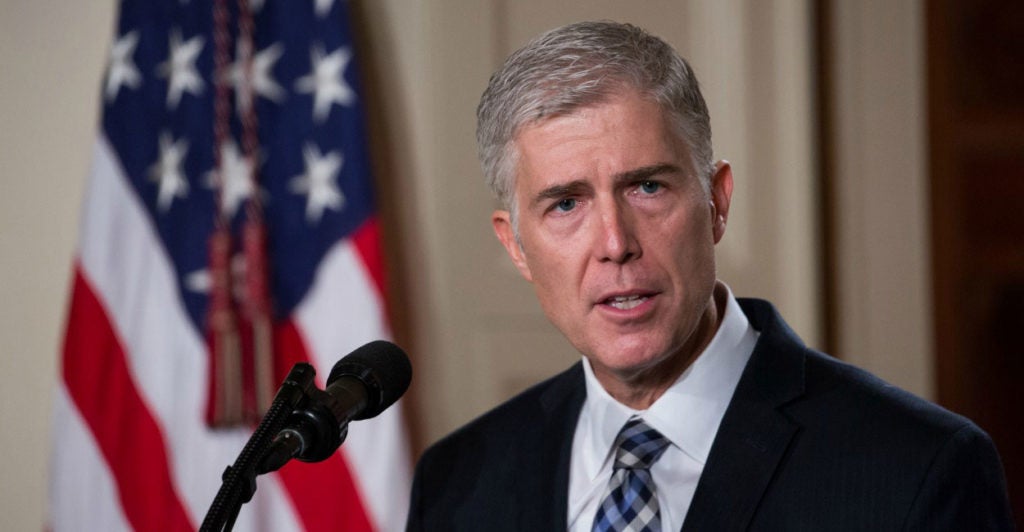Justice Antonin Scalia’s Supreme Court seat.
“Millions of voters said this was the single most important issue to them when they voted for me for president,” President Donald Trump said last Tuesday night.
And Trump then went on to make one of the best choices of his young administration. Judge Neil Gorsuch of the United States Court of Appeals for the 10th Circuit is a tremendous pick for the Supreme Court.
First, Gorsuch is unquestionably qualified.
He graduated with honors from Harvard Law School and received a doctorate in jurisprudence from Oxford. He clerked for three brilliant and well-respected jurists: Judge David Sentelle on the D.C. Circuit Court of Appeals, Justice Byron White, and Justice Anthony Kennedy.
In 2005, he joined the Department of Justice as principal deputy attorney general, and he became a judge on the 10th Circuit in 2006—thanks to a 100-0 confirmation vote by the Senate—where he has sat for the last decade.
You could not ask for a better legal education or a stronger record of accomplishment.
Second, and most importantly, Gorsuch has the correct approach to the law.
He is a judge’s judge. He is the type of judge who believes that the law has right answers and that the law is not simply a tool to achieve political goals. He decides cases based on what the law says, not what he may want the law to say.
As Gorsuch observed in his remarks accepting Trump’s nomination, “A judge who likes every outcome he reaches is very likely a bad judge, stretching for results he prefers rather than those the law demands.”
This is the central insight of the conservative legal movement that Scalia helped shape.
Judges do not have a roving commission to address the big policy questions we debate in Congress and the public square. The judge’s role is to apply the law to the facts of the case before it and, in the case of the Supreme Court, provide guidance to the lower courts so that they can resolve difficult and consequential legal questions.
Gorsuch understands the difference between the judge, the legislator, and the citizen, and that’s reflected in his work on the bench.
Third, Gorsuch’s written opinions are simply brilliant. They are digestible to lawyers and non-lawyers alike—and this is crucial because the judiciary belongs to everyone in the country, not just attorneys.
Two cases in particular stand out.
In 1984, when the court decided Chevron U.S.A., Inc. v. Natural Resources Defense Council, Inc., it did not know it was issuing what would become one of the most cited cases in court history.
The Chevron decision held that courts must defer to an agency interpretation of a statute if the statute is ambiguous.
The problem with Chevron, as Gorsuch pointed out in his dissent in Gutierrez-Brizuela v. Lynch, is that Chevron divests the courts of their obligation to “say what the law is,” as former Chief Justice John Marshall wrote in the seminal case Marbury v. Madison.
It has led to a system in which executive agencies not only make the law and enforce the law but also interpret it. This is an egregious violation of the separation of powers at the heart of our constitutional republic.
Another notable case, in which Gorsuch was the lone dissenter, involved an 11-year-old student who was arrested for generating fake burps in class. Gorsuch concluded that clearly established law prevented the arrest and that the child’s parents should prevail in a lawsuit against the school officials who called the police.
This commonsense reasoning is far too rare in our justice system these days.
This Supreme Court vacancy was a central issue in the 2016 election and the people have now spoken.
I plan to honor the election results by working as hard as I can to ensure that the Senate confirms Gorsuch to the Supreme Court, and I urge Americans of all political stripes to do the same.
